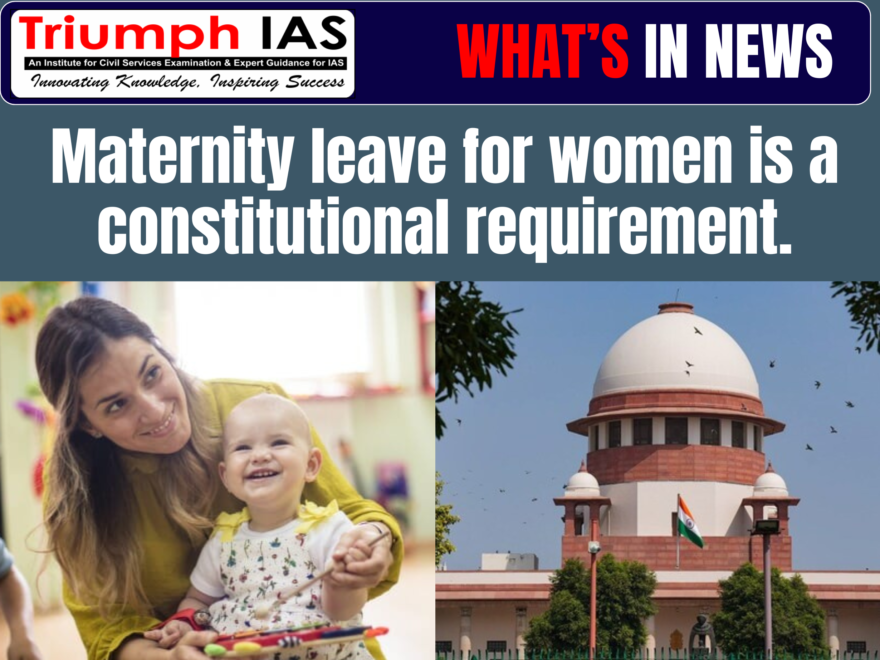Maternity leave for women is a constitutional requirement !
Why in News
Case Background
The petitioner approached the court because her son has Osteogenesis Imperfecta, a rare genetic disorder that causes brittle bones. Her request for child care leave was denied as the state government had not implemented the provisions for child care leave outlined in Rule 43-C of the Central Civil Services (Leave) Rules, 1972.

Verdict from the Supreme Court
The Supreme Court observed that denying mothers child care leave goes against the constitutional duty to ensure fair treatment of women in employment. Women’s participation in the workforce is not just a privilege but a constitutional entitlement safeguarded by Article 15 of the Indian Constitution.
The Supreme Court directed the Himachal Pradesh government to revise its Child Care Leave (CCL) policies for mothers to align with the Rights of Persons with Disabilities Act 2016, particularly for mothers of children with special needs.
Significance of Supreme Court Ruling for CCL to Women
- Addresses the systemic challenges women face in balancing careers and caregiving, especially for children with disabilities.
- Highlights how denying childcare leave perpetuates gender gaps in the workforce and compromises the rights of disabled children to proper care.
- Raises awareness of societal attitudes toward caregiving, gender roles, and the inclusion of individuals with disabilities.
- Underscores the importance of implementing inclusive policies that promote gender equality and support working parents, including those with disabled children.

Importance and Advantages of Taking Child Care Leave
- -Enhances employee retention and productivity, leading to higher female labor force participation rates and economic growth.
- Offers crucial support for working mothers to balance their professional and personal responsibilities.
- Empowers women through special provisions under Article 15(3) of the Indian Constitution, recognizing the disproportionate burden of childcare on women.
- Aligns with the welfare state model in the Directive Principles of State Policy, as outlined in Article 42 of the Indian Constitution.
Efforts by the government to enhance the participation of women in the labor force in India
The government has enacted various labor laws and implemented schemes to address gender disparities and promote women’s employment, including:
- Codification of labor laws into four codes, extending maternity leave and requiring crèche facilities.
- Beti Bachao Beti Padhao scheme to ensure the survival, safety, and education of female children.
- Measures to ensure safe and convenient accommodation for women, such as the Sexual Harassment of Women at Workplace Act.
- Support for women affected by violence through One Stop Centres and Women Helplines.
|
Child Care Leave provision in India is governed by the Central Civil Services (Leave) Rules, 1972.
|
Sociology Optional Program for
UPSC CSE 2025 & 2026
 |
 |
 |
 |
 |
 |
Follow us :



